Sputnik ushers in the space age
 The Soviet Union launches the world’s first artificial satellite, the short-lived Sputnik, which transmits a steady signal from orbit that can be tracked by radio. The reaction in the United States is one of alarmed paranoia, since the launch of an orbiting vehicle demonstrates technological capabilities in excess of what is needed to launch missles from the USSR toward American soil. Sputnik’s launch is the Soviet Union’s contribution to the International Geophysical Year, an international scientific event during which the United States has also promised to launch a satellite.
The Soviet Union launches the world’s first artificial satellite, the short-lived Sputnik, which transmits a steady signal from orbit that can be tracked by radio. The reaction in the United States is one of alarmed paranoia, since the launch of an orbiting vehicle demonstrates technological capabilities in excess of what is needed to launch missles from the USSR toward American soil. Sputnik’s launch is the Soviet Union’s contribution to the International Geophysical Year, an international scientific event during which the United States has also promised to launch a satellite.

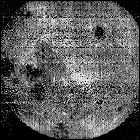 The Soviet Union’s Luna 3 unmanned probe is launched toward the moon, where it transmits the first images of the moon’s far side back to Earth – a sight that has never been seen by humans before since the moon’s near side is tidally locked toward Earth. Luna 3’s closest pass to moon brings it to within 4,000 miles of the lunar surface, and despite low signal strength and data errors during transmission, nearly 20 images of the moon’s far side are sent back to Soviet scientists via a process not unlike sending a fax.
The Soviet Union’s Luna 3 unmanned probe is launched toward the moon, where it transmits the first images of the moon’s far side back to Earth – a sight that has never been seen by humans before since the moon’s near side is tidally locked toward Earth. Luna 3’s closest pass to moon brings it to within 4,000 miles of the lunar surface, and despite low signal strength and data errors during transmission, nearly 20 images of the moon’s far side are sent back to Soviet scientists via a process not unlike sending a fax. The U.S. Air Force launches the first active-relay communications satellite into orbit, Courier 1B (the original Courier 1 having been lost to a faulty launch vehicle earlier). Unlike the reflective Echo 1 satellite, Courier 1B uses power from the solar cells covering its spherical casing to reboost and retransmit the signals it receives from Earth. Once again, a message from President Eisenhower is transmitted, this time to be received by the United Nations. Clourier 1B remains functional for just over two weeks before a glitch renders it useless.
The U.S. Air Force launches the first active-relay communications satellite into orbit, Courier 1B (the original Courier 1 having been lost to a faulty launch vehicle earlier). Unlike the reflective Echo 1 satellite, Courier 1B uses power from the solar cells covering its spherical casing to reboost and retransmit the signals it receives from Earth. Once again, a message from President Eisenhower is transmitted, this time to be received by the United Nations. Clourier 1B remains functional for just over two weeks before a glitch renders it useless. ABC airs the 64th episode of the supernatural anthology series One Step Beyond, hosted and directed by John Newland. Elizabeth Montgomery (Bewitched) guest stars.
ABC airs the 64th episode of the supernatural anthology series One Step Beyond, hosted and directed by John Newland. Elizabeth Montgomery (Bewitched) guest stars.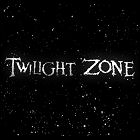 The 122nd episode of Rod Serling’s The Twilight Zone airs on CBS. Lee Marvin stars.
The 122nd episode of Rod Serling’s The Twilight Zone airs on CBS. Lee Marvin stars. The United States Federal Communications Commission places a ten-year hold on television station licenses for UHF channel 37. Channel 37’s bandwidth, in the 608-614 megahertz range, is vital to the burgeoning science of radio astronomy. The FCC immediately sets about reallocating channels on the UHF dial for 18 television stations across America, which had previously been allocated channel 37 on their licenses. One month later, the ban on broadcasting in that part of the spectrum is made global; no television station in the United States, Mexico, Canada, and several other countries will ever occupy those frequencies. When the ban comes up for review again in
The United States Federal Communications Commission places a ten-year hold on television station licenses for UHF channel 37. Channel 37’s bandwidth, in the 608-614 megahertz range, is vital to the burgeoning science of radio astronomy. The FCC immediately sets about reallocating channels on the UHF dial for 18 television stations across America, which had previously been allocated channel 37 on their licenses. One month later, the ban on broadcasting in that part of the spectrum is made global; no television station in the United States, Mexico, Canada, and several other countries will ever occupy those frequencies. When the ban comes up for review again in  The fourth episode of Irwin Allen’s adventure series Voyage To The Bottom Of The Sea airs on ABC, starring Richard Basehart and David Hedison, based on Allen’s 1961 movie of the same name. Rita Gam and Alejandro Rey guest star.
The fourth episode of Irwin Allen’s adventure series Voyage To The Bottom Of The Sea airs on ABC, starring Richard Basehart and David Hedison, based on Allen’s 1961 movie of the same name. Rita Gam and Alejandro Rey guest star.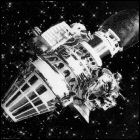 The Soviet Union launches unmanned space probe Luna 7 to land on the moon, having spent months analyzing the failed flights of Luna 5 and 6 and implementing safeguards against those failures. Unforuntately, however, a different technical problem strikes Luna 7 just hours away from the moon’s surface, preventing it from firing its braking rockets. Luna 7 does reach the moon, but not at a survivable speed, crashing into the surface very close to its intended landing site.
The Soviet Union launches unmanned space probe Luna 7 to land on the moon, having spent months analyzing the failed flights of Luna 5 and 6 and implementing safeguards against those failures. Unforuntately, however, a different technical problem strikes Luna 7 just hours away from the moon’s surface, preventing it from firing its braking rockets. Luna 7 does reach the moon, but not at a survivable speed, crashing into the surface very close to its intended landing site.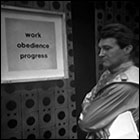
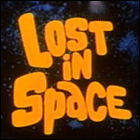 The 64th episode of Irwin Allen’s science fiction series Lost In Space premieres on CBS, starring Guy Williams, June Lockhart, and Jonathan Harris. Arthur Batanides guest stars.
The 64th episode of Irwin Allen’s science fiction series Lost In Space premieres on CBS, starring Guy Williams, June Lockhart, and Jonathan Harris. Arthur Batanides guest stars. The
The 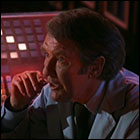
 The 17th episode of The Six Million Dollar Man is broadcast on ABC, starring Lee Majors and Richard Anderson. Anne Revere guest stars.
The 17th episode of The Six Million Dollar Man is broadcast on ABC, starring Lee Majors and Richard Anderson. Anne Revere guest stars.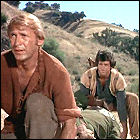 The
The  ABC airs the
ABC airs the  The
The 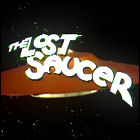 ABC airs the fifth episode of Sid & Marty Krofft’s The Lost Saucer, starring Jim Nabors (The Andy Griffith Show, Gomer Pyle USMC) and Ruth Buzzi (Rowan & Martin’s Laugh-In).
ABC airs the fifth episode of Sid & Marty Krofft’s The Lost Saucer, starring Jim Nabors (The Andy Griffith Show, Gomer Pyle USMC) and Ruth Buzzi (Rowan & Martin’s Laugh-In). The
The  The
The 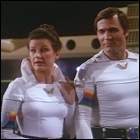 NBC airs the
NBC airs the  The
The  The fourth episode of the Hammer Studios-produced horror anthology series Hammer House Of Horror airs on ITV. Barbara Kellerman guest stars.
The fourth episode of the Hammer Studios-produced horror anthology series Hammer House Of Horror airs on ITV. Barbara Kellerman guest stars. CBS airs the
CBS airs the 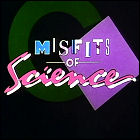 The first episode of James D. Parriott’s lighthearted sci-fi series, Misfits Of Science, premieres on NBC, starring Dean Paul Martin, Kevin Peter Hall (Predator, Harry And The Hendersons), and Courteney Cox (Friends, Scream, Cougar Town). Larry Linville (M*A*S*H) guest stars.
The first episode of James D. Parriott’s lighthearted sci-fi series, Misfits Of Science, premieres on NBC, starring Dean Paul Martin, Kevin Peter Hall (Predator, Harry And The Hendersons), and Courteney Cox (Friends, Scream, Cougar Town). Larry Linville (M*A*S*H) guest stars.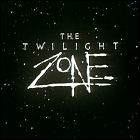 CBS airs the 26th episode of a revival of Rod Serling’s The Twilight Zone. Fred Savage (The Wonder Years) and Lukas Haas star in an episode comprised of two short stories, J. Michael Straczynski’s What Are Friends For? and Aqua Vita.
CBS airs the 26th episode of a revival of Rod Serling’s The Twilight Zone. Fred Savage (The Wonder Years) and Lukas Haas star in an episode comprised of two short stories, J. Michael Straczynski’s What Are Friends For? and Aqua Vita.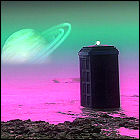 The
The  The
The  The
The 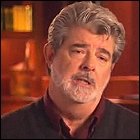 A decade after the premiere of the most recent Star Wars theatrical film (and a couple of years into a burgeoning new wave of Star Wars marketing whose most visible components are new original novels, a new action figure line, and popular role playing and computer games), George Lucas quietly announces in Daily Variety that he plans to produce – but not direct –
A decade after the premiere of the most recent Star Wars theatrical film (and a couple of years into a burgeoning new wave of Star Wars marketing whose most visible components are new original novels, a new action figure line, and popular role playing and computer games), George Lucas quietly announces in Daily Variety that he plans to produce – but not direct –